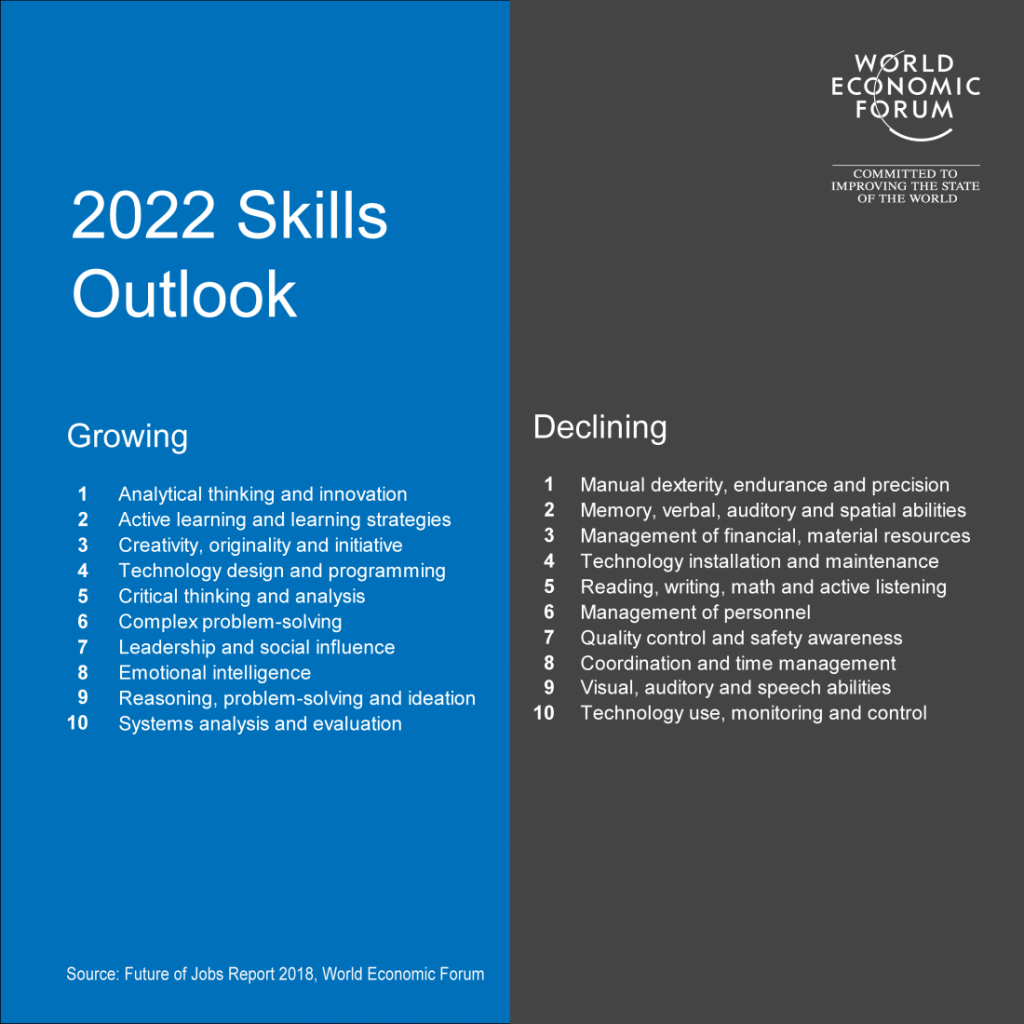What’s all this fuss around AI (artificial intelligence) and Machine Learning? Everyone has seen a movie where an evil computer tries to conquer the world and subjugate human kind. Well… I’m sorry to disappoint you, but the current AI isn’t that kind of movie material. AI is here. AI is already part of your daily life.
Really? Where?
AI is in your Google search and when it tries to guess what you are searching for. It’s there when you’re buying something, and it suggests products that you might have an interest in (also when you’re watching Netflix, by the way). It is there when your photo album app recognizes the faces of your family members. You can find AI basically in every aspects of your life and across many industries and businesses. Most of the time you don’t even realize that it’s there. The reality is that your life gets pretty easy, giving you more free time to pursue your goals!
Businesses are already embracing this technology, that was recently released to the masses and out of the scientist’s realm. You might not know it yet, but your competition is probably already seizing this opportunity.
How impactful can Artificial Intelligence be on the world?
It‘s estimated that Artificial Intelligence (AI) will make 75 million jobs obsolete by the year 2022, according to a new report from the World Economic Forum. However, job losses will not outweigh job creation (133 Million jobs). AI will, undoubtedly, represent a huge challenge!
This represents a big challenge to your business as well. You’ll need to understand which technologies to invest in but, more importantly, you’ll need to realize that, above all, you must invest in people. This is the crucial step. It’s estimated that a large majority of all employees will require significant training. I think an investment in both training and hiring new people will be the best business approach.
What is driving this change?
According to the WEF report, there are four main causes: i) ubiquitous high-speed mobile internet, ii) the evolution of Artificial Intelligence itself, iii) the widespread adoption of big data analytics, iv) and cloud technology. Most of the surveyed companies will expand their use of big data analytics and likely adopt new technologies such as IoT, cloud computing and machine learning.
The state of work survey by Workfront (a source usually used by WEF) is showing that businesses aren’t ready for the rapid innovation that a sustained market leadership will require. Innovation may need better tools and time in order to succeed, because employees will need to feel free to innovate and not be stuck in the day-to-day work. As you can see below, by 2022 the skills required to perform most jobs will be significantly shifted :

They also predicted that, in a near future, robots or artificial intelligence will replace a portion of people’s jobs. Initially, it will be centered on “white collar” jobs, such as contact centers, human resources or accounting departments. Robots and machine learning will be a tool that helps workers getting things done and focus on innovation. However, this new era shouldn’t be feared but rather understood as an ally.
These changes will not happen just because one wants it to. It will need major changes within your organization. For example, in order to entice better innovation, your business should be measuring workers by the success of business initiatives (instead of their predefined role’s). This way, people will be better aligned with the main business focus point.
PRO TIP
[edgtf_blockquote text=”Initially, this can be a scary change. So, start using new technologies or new ways of work in a small test group. Plan, test, adjust and implement!” title_tag=”h4″ width=”85%”]
What is Artificial Intelligence, Machine Learning and Deep Learning?
Artificial Intelligence (AI) is basically any intelligence exhibited by a machine which given a problem will lead it to a solution. According to Wikipedia, Artificial Intelligence “is intelligence demonstrated by machines, in contrast to the natural intelligence displayed by humans and other animals”. Back in the 50’s AI started as a dream to construct a machine that would have the same features as the human intelligence. This is known as General AI and we aren’t there yet.
What has been done falls under the realm of the Narrow AI, which is defined as the technologies that can perform a specific task as well or better than a human can.
Machine learning (ML) is a subset of the larger discipline AI and represents a way to achieve AI. Machine learning is “the ability to learn without being explicitly programmed” (Arthur Samuel, 1959). It is the practice of using algorithms to parse data, learn from it, and then make a determination or prediction. Therefore, themselves, these algorithms don’t have the solving or cognitive capabilities. These are mainly elements of a whole.
Deep learning is an approach to ML which is inspired by the architecture of our brains. Therefore, it is the spectrum of algorithms that mimic the workings of a biological brain (Neural Networks). It‘s constructed by different layers of neural networks that focus on a primary characteristic. This layering feature is a reason for the name deep learning.
Does my business really need AI?
The “big dogs” already are using Artificial Intelligence. The ones that aren’t, must up their game or fade away… that’s how it rolls! What about small businesses? Do they need AI? Without the necessary financial and technical resources will small business lag?
Technology adoption will always be slower for small businesses – AI or otherwise. But by not adopting it, there are opportunity costs that, in longer term, may be the difference between a business that sky rockets and a business that doesn’t seem to budge.
What AI brings is the ability to work on what matters the most, leaving the repetitive tasks to a computer. This argument alone should be more than enough for a small business where every bit of time is precious.
AI will make a bigger difference for the early adopters, who will be a step ahead of the competition. But how? Marketing and lead generation are areas where AI can make a huge difference. Also, the time spent on customer support or fine-tuning a marketing campaign can be drastically reduced.
Finally, AI will accompany the business growth, meaning that, the cost tends to decrease and deals to increase! Sounds good, doesn´t it?!
Where are AI and Machine Learning being used?
In the earlier years, Artificial Intelligencedomain was restricted to a community of researchers and academics. In the past few years, AI application in business has seen an exponential growth. Why? Simply because the learning algorithms are being released to the global community as programming libraries or frameworks (such as Python’s NumPy and Keras or Google’s TensorFlow). The truth is that you don’t need to know how a car works mechanically to know how to drive it!
Where we find use cases of AI application? In multiple corners of business. So, tune in!
Healthcare:
Healthcare Artificial Intelligence Software, Hardware, and Services Market will surpass $34 Billion Worldwide by 2025. Tractica reported that AI is being progressively used to bettering data analytics capabilities, besides automating key healthcare-related tasks. Also forecasts that global software revenue from 22 key healthcare AI use cases will grow from $511.7 million in 2018 to $8.6 billion annually by 2025. Tractica projects that the top 10 use cases for healthcare AI will be as follows:
- Medical image analysis;
- Drug discovery and effectiveness;
- Medical treatment recommendation;
- Patient data processing;
- Medical diagnosis assistance;
- Converting paperwork into digital data;
- Automated report generation;
- Hospital patient management system;
- Biomarker discovery;
- Cost reduction.
Governance and Policy/Legal Compliance:
- AI is being used to help analyze effects of a legislation more accurately and helping the government’s day-to-day administration. Stanford University and ETH Zurich researchers came up with an algorithm that help countries settle refugees by finding employment and integrating into an unfamiliar society. This algorithm works by comparing individual features, such as English fluency and education level, settlement location and the person’s employment outcome. Potentially, employment rates would be boosted by 41%;
- At Stanford University, Stefano Ermon, a computer science professor, is addressing the poverty issue with a “computational sustainability” tactic. Deep learning is being applied to satellite imagery (night and day imagery), to predict poverty in regions where surveys are inaccurate or even impossible. This same approach can be used to estimate economic development (through electrical infrastructure mapping, for example) and identify the locations that need aid the most (by determining the location’s agricultural production or its proximity of water sources). This approach has outperformed the traditional crop predictions;
- The type of cars found in a neighborhood can be a good interpreter for socioeconomic status or political inclinations. Fei Li – a computer vision expert – is using Google Street View data to determine metadata regarding the cars that are found. “if the number of sedans encountered during a 15-minute drive through a city is higher than the number of pickup trucks, the city is likely to vote for a Democrat during the next Presidential election (88% chance); otherwise, it is likely to vote Republican (82%).”
Finance:
- Capital One Eno is a chatbot that enables customers to chat with the bank using text-based natural language to pay bills and retrieve account information;
- Wells Fargo uses AI to prevent fraud and better compliance, customer experience, underwriting and authentication;
- IBM Watson is being used for Cybersecurity with multiple players in insurance and banking industries;
- Wealthfront and WiseBanyan are robot advisors that automate portfolio management services which are used to manage and grow customer investments.
Industrials/Engineering/Manufacturing:
- Siemens’ Mindsphere is a smart cloud for industry, also integrating IBM’s Watson Analytics. It aims to monitor and analyze everything from design phase to the delivery of manufacturing, in order to find unseen problems and respective solutions. As an example, Siemens latest gas turbines (with more than 500 sensors) feed its monitoring information (the internal fluid’s variables such as temperature, pressure, etc. and other external variables) to its AI, which enables Siemens to continuously adjust the turbine parameters to attain optimal performance;
- GE’s Brilliant Manufacturing Suite is taking a holistic approach to also monitor everything in the manufacturing process. It has been mentioned to have improved the effectiveness of machines in a factory by 18 percent;
- Generally, AI is serving manufacturers to find new business models, adjust product quality and enhance manufacturing operations at the shop floor level. McKinsey has predicted that machine learning will diminish supply chain projection errors by 50% and increase sales through better product availability.
Art and Design:
- Adobe Sensei’s image-editing features help you to easily change a “frown into a smile” which would normally take you hours to accomplish. Google Brain’s Magenta project aims for generative art and build;
- Autodesk’s Dreamcatcher is the CAD system that speeds up industrial product design. Through AI, Dreamcatcher is automatically generating multiple design variations to more rapidly create the final best product as per its requirements;
- UIzard Technologies created Pix2Code using computer vision and NLP to convert GUI screenshots into working code, therefore, dramatically abridging the workload of front-end developers.
Marketing / Ecommerce:
- Twiggle or Clarifai work in e-commerce search engines, avoiding consumers to abandon their e-commerce experience;
- Mintigo, a predictive marketing business is enabling the generation of significant new leads (customer prospects) for Getty by capturing the data that shows which businesses have websites featuring images from Getty’s competitors;
- The North Face is using IBM Watson to enable online customer to determine their perfect jacket.
Human Resources:
- Studying the employee’s query patterns may improve future interactions and create relevant information for other employees (for example, while you are typing in chrome browser, Google is able to suggest alternative queries). A knowledge base can be continuously created by diagnosing the queries from your employees. If you gather the appropriate responses for these queries, you’ll be able to deliver requested information without using a HR representative;
- Like Amazon is applying their AI engine to suggest products that you might want, you can apply the same concepts to your HR department. All information (articles, pages, external links, legal forms, etc.) related to a specific HR subject may be made readily available or suggested to the employee at the time of his or hers first inquiry on the company’s intranets. It would base this information on what other employees searched regarding that same subject;
- IBM is hiring with AI’s help too. IBM is using AI to obtain each job applicants’ digital trail. This software is able to screen work samples, social media or behavior signs (like understanding, prejudice, curiosity, etc.). As a result, they can better identify the people that best fit the company’s culture.
And the list goes on and on…
Now is the time to act
Summing up. Artificial Intelligence is here to stay, and it is everywhere… Ouch! This almost sounds like the big brother entity from famous George Orwell’s book, “1984”. It’s accessible and your competition is probably already making a move.
Your first step of this long walk is done! You read this article to the end. You are now aware. It’s up to you to make this information actionable. There are already plenty of online courses you can learn from, oriented both to business and/or technical facets.
But don’t stop here! Join a community. Follow the most influential people on social networks. Investigate what is being done on your industry. Join one of our conversations about AI. We are also learning about it, you know? We can make this journey together. So, let’s connect! Send us your questions and concerns!





